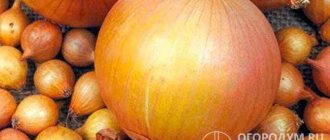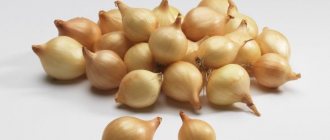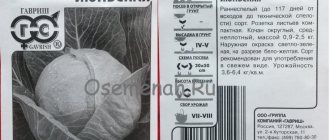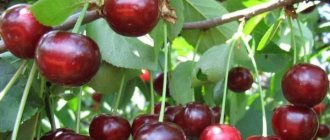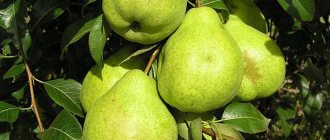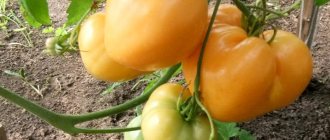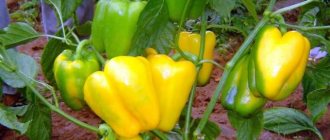Description and characteristics of the variety
- Mid-early ripening hybrid. The fruits can be harvested 70-80 days after the sprouts appear.
- The feathers extend to a height of about 35 cm.
- The root system is powerful, this allows the onion to develop faster.
- Easy to care for, so it is suitable for growing for both experienced and young gardeners.
- Resistant to short-term drought and temporary cold snap.
- Not susceptible to most fungal diseases and infections. In rare cases, it may be affected by pests.
- Productivity - 8 kg per 1 sq. m plot.
Important! Every year, onions must be planted in a new place to avoid the appearance of diseases and reduced yields.
- The neck is of medium thickness. Belongs to the 1st or 2nd rudimentary type.
- Suitable for cultivating turnips in a biennial culture. First, nigella seeds are sown on onion sets. And in the second year they sow turnip sets.
- Maturation 100%.
Onion sets Hercules F1
When choosing a variety, gardeners have many questions. They are interested not only in the appearance of the onion, but also in its taste. The characteristics of the hybrid variety Hercules are based on the obvious advantages of the vegetable.
Breeding features of the hybrid:
- Mid-early variety, ripens 70-80 days after germination;
- The bulbs have an elongated elliptical shape;
- A head grows weighing 120-160 g;
- The heads are covered with dense yellow scales on top;
- Inside the flesh is white, juicy, with a spicy aftertaste;
- The plant is disease-resistant;
- Productivity up to 8 kg/sq.m;
- It has a shelf life, retains its vitamin composition and juiciness until the new harvest.
The ability to tolerate drought allows the variety to be planted in regions where the weather is dry. Breeders achieved this feature of onions due to a strong root system. But the harvest must be harvested on time so that secondary roots do not begin to grow.
Advantages and disadvantages
The Hercules bow has many advantages:
- Long-term storage, during which all nutrients, as well as taste and aroma, are preserved.
- High yield.
- Great taste.
- Immunity to diseases and pests.
- Drought resistance thanks to a powerful root system.
However, it is worth noting some disadvantages:
- Hybrid, so the seeds are not suitable for further propagation.
- High price of seed.
Using a bow
Hercules onions are widely used in cooking as a spice and are added to various dishes. Due to its taste, it is suitable for preparing fresh vegetable salads, pickling, and snacks. Refers to sweet onion varieties. Onions can be frozen, and after defrosting they can be used.
The Hercules onion is widely used in folk medicine. It is used for inhalation, as compresses in the treatment of skin diseases, in the form of juice and for the preparation of various tinctures. Using onions, you can cure a runny nose, sore throat, bronchitis and common cough, boils and abscesses, otitis media and calluses. Onion juice can soothe toothache.
Features of cultivation
Before planting, the sets are soaked in a solution of salt, potassium permanganate or copper sulfate for disinfection. This is especially important if the planting material was not packaged and stored incorrectly.
Crop rotation is also taken into account:
- Can be planted after tomatoes, eggplants, potatoes, lettuce, spinach, and melons.
- You cannot plant after garlic, corn, carrots, or sunflowers.
Onion planting dates
The seedlings are planted in the beds in April-early May. By this time, the soil should already warm up to + 10 °C.
Preparing the beds
The beds are prepared according to the following algorithm:
- the area should be sunny, without shade, since onions are heat-loving.
- lowlands are not suitable, as moisture accumulates in them;
- the soil should be light sandy loam, loam and loose chernozem with neutral acidity, saturated with nutrients;
- during winter planting, when digging up the area, add 1 square meter. m 500 g of wood ash;
- for spring plantings in the fall when digging into the ground per 1 sq. m add 2 tbsp. spoons of superphosphate, 1 tbsp. a spoonful of potassium chloride, half a bucket of humus (no manure);
- in April additionally by 1 sq. m add 1 tbsp. a spoonful of urea or 1 tbsp. a spoonful of ammonium nitrate.
Planting before winter
Hercules onion sets can also be planted in the fall. Then the harvest will be ready for harvest in late July-early August. Planting material must be planted 15-20 days before the onset of frost. It’s not worth it earlier, otherwise the onion will begin to sprout and its feathers will then freeze, which will negatively affect the future quality and quantity of the harvest. Before winter, it is better to plant the smallest set so that it begins its development as early as possible and produces a rich harvest. After planting, the beds are mulched with dry grass and sawdust, making a layer of about 10-12 cm.
Important! Onion Hercules can be planted in the fall only in regions with mild winters.
Watch the video! Planting onions before winter. A simple and reliable way
Planting seeds in open ground in spring
- Onion seeds are soaked in growth stimulator Epin, Zircon for 24 hours;
- Place them on a cloth and cover them for 3 days, maintaining humidity; after about 2-3 days they begin to germinate;
- They are planted in grooves 3-4 cm deep evenly every 6-7 cm with an interval between rows of 20-30 cm;
- sprinkle with soil on top.
The seedlings ripen after 3 months; they are collected and stored at optimal temperature and humidity.
Sowing onion sets in spring
Planting sets
Since the heads will grow large, the seedlings are planted in holes at a distance of 15 cm from each other, leaving a row spacing of 30 cm. The treated material is well dried and buried 5 cm into the hole.
Important! The bulbs are sprinkled with soil on top so that the neck is underground at a distance of 2 cm from the surface.
Growing and care
Plant care is as follows:
- watering 2-3 times a week from June to July 15;
- after July 16, watering is stopped - you need to focus on the wilting of the feathers. This may happen after August 1;
- after watering, the soil is loosened by 2-3 cm;
- remove weeds.
Top dressing
During the season, onions need to be fertilized 3-4 times, per 1 sq. m use 5 liters of subcortex:
- When the first shoots appear, 10 g of urea is diluted in 5 liters of water.
- After 15 days, 20 g of nitrophoska are diluted in 5 liters.
- Next, use potassium phosphate fertilizers according to the instructions on the package.
Harvest and storage
When the neck of the onion dries and closes, the fruits are dug out with a pitchfork and the feathers are cut off at a distance of about 10 cm.
The heads are dried for 4-5 days in good weather right in the garden. Then they are put into boxes and sent for storage in a dry room.
Onion propagation methods
The seeds of the Hercules hybrid are sown in the ground in the spring in order to dig up a set in July. It is dried, feathers are removed and stored at a temperature of 5-15 °C. In the spring, the sets are planted on turnips.
Planting care
The hybrid variety is easy to care for. To get a bountiful harvest, the plant needs to be watered, fed and weeded in a timely manner.
The beds need to be loosened in a timely manner
Onions need moderate watering. To do this, you should use settled or rain water. During drought, plantings should be irrigated at intervals of 3-4 days. If there is sufficient rainfall, the procedure can be carried out less frequently. 3 weeks before harvesting, watering should be stopped.
Beneficial features
As noted earlier, the Hercules variety of onions produces few arrows, so all the beneficial substances are fully concentrated directly in the bulb. They contain many useful substances. Firstly, this should include vitamins of groups B and PP, C, E, H (vitamins of this little-known group H are one of the most effective means for strengthening the nail plate and hair), proteins, sugars, and mineral salts. Among the microelements contained are copper, iron, manganese, zinc, iodine, chromium, fluorine, bromine, cobalt. Let's pay attention to the list of macroelements - calcium, magnesium, potassium, sodium, sulfur, phosphorus, chlorine. Microelements and macroelements help the normal functioning of the central nervous system, as well as the brain. Nutritional value of onions per 100 g of product:
- calories – 2%;
- carbohydrates – 7%;
- protein – 2%;
- fat – 0.5%;
- dietary fiber – 4.5%.
Due to its low calorie content and fat-burning properties, onions promote weight loss. Does not contain cholesterol. It contains a certain amount of sulfides, which help eliminate “bad cholesterol,” thereby normalizing blood pressure.
The effect of sulfides also prevents the growth of malignant tumors.
Like any other, the Hercules onion variety has a strong, characteristic odor. And, although this feature of onions cannot be called the most attractive, it is this smell that makes onions a powerful natural antibacterial agent. Fresh onions have a detrimental effect on all kinds of pathogenic bacteria, infections and microbes.
Due to the presence of sulfur compounds and flavonoids, bone density increases, which significantly reduces the risk of fractures.
Onions contain components that stimulate the generation of insulin, which helps lower blood sugar.
The immunomodulatory property is one of the main benefits of onions. The vegetable increases sweating, which indicates improved blood circulation.
Due to its composition, onions are useful for pregnant and lactating women, because they can increase hemoglobin levels.
Your personal gardening consultant!
The dream of every gardener is an excellent quality onion harvest. It is quite simple to implement this idea by choosing the Hercules variety for planting. Standard for others in terms of quality, it will certainly be able to please you with good performance. In addition, the variety is stored very well in winter, which only adds another tick to the list of its irrefutable advantages.
Onion Hercules: description of the variety and breeding features
If you turn your attention to Hercules onions, the description of the variety, of course, is of first interest. First of all, it is worth noting that it was bred quite a long time ago by Dutch breeders and throughout its existence has become such a standard for all other hybrids. In addition, other features of the variety are no less indicative:
In addition, other features of the variety are no less indicative:
— Hercules is classified as a mid-early variety; full-fledged large bulbs can be harvested in about 70–80 days.
— The height of the plant can reach 35 centimeters, but the fruit itself is quite large and weighs 120–160 grams.
— The peel on the bulb is quite dense, dry scales are golden-yellow in color, while juicy scales are white.
— The taste is a little sweet, but with a noticeable spice, without bitterness. At the same time, it is interesting that even in hot dishes, onions do not change their taste, thereby giving them a special aftertaste.
— To get a good harvest, it is best to first grow a Hercules onion set: the description of the variety recommends first sowing nigella, and from the resulting small bulbs to collect a good large turnip next year.
— The variety resists diseases very well and shows high yields: up to 8 kilograms per 1 square meter.
— This variety has exceptionally good storage ability. At the same time, it can be stored for a very long time and does not lose its taste, special aroma and nutritional value at all, which can be a decisive factor for many housewives.
In this sense, Hercules is a universal variety that can be planted both before winter and in spring:
- In the first case, you need to choose a smaller Hercules onion set - the description of the variety recommends doing this to make up the difference in the race. In this case, the winter onion usually catches up in size with the spring onion. By the way, the “winter version” does not give any marksmanship at all. But, by and large, they are not needed, since the seeds of this hybrid are unsuitable for further planting in order to obtain a new set.
- Larger, or even medium-sized bulbs, 1.5 - 2 centimeters in size, should be planted in the spring. Given the climatic characteristics of the region, this may be from April to May. Hercules is very thermophilic, so you need to wait until the average air temperature warms up to at least +10 C.
In addition, the final result is influenced by the peculiarities of agricultural technology for growing crops:
Seed planting depth. This figure should be 3 - 5 centimeters. At the same time, the optimal distance between them is 8 - 10 centimeters, and between the rows about 25 - 30 centimeters
Compliance with these standards is extremely important, since they are what allow large-sized bulbs to ripen
Watering. Immediately after planting, the Hercules onion begins to form an impressively sized root system, which extracts nutrients from a fairly large volume of soil. This allows the variety to respond completely painlessly to irregular watering.
Weeding. And this is the main operation that consists of caring for this onion. At the same time, labor costs can be significantly reduced; for this purpose, careful mulching can be done between the rows using straw or sawdust.
Feeding. During the entire growing season, it is worth carrying out several times, for which absolutely any complex fertilizer containing microelements is suitable.
Disadvantages of the Hercules variety
If we talk about the “cons,” then the only thing that can be found is the inability to breed this variety yourself. It’s a hybrid after all, and therefore it’s simply useless to save the seeds. You will have to buy new planting material every time, and by the way, it is not cheap.
But, you see, if you take into account the variety’s yield, disease resistance and good results during storage, we can conclude that this investment is more than profitable! If you want to get a good harvest of onions that will be perfectly stored until next summer, choose the Hercules variety!
Share useful information:
Preventive actions
Despite the fact that the Hercules onion variety is resistant to diseases, it does not hurt to take preventive measures. It is recommended to carry out preventive treatment before planting. For 10 hours, the bulbs are soaked in a nitrophoska solution (1 tbsp diluted in 10 liters of water.
Planting material such as Hercules onion belongs to universal crops. It can be planted in different seasons, does not require complex care, and is also highly resistant to diseases and pests. Initially, you need to decide on the best area for onions and planting time.
When to plant
Planting of onions of the Hercules variety is carried out in early spring. It must be remembered that Hercules onion is considered an early variety, however, the plant is heat-loving and can rot when planted in cold soil, which significantly worsens future yields. You can plant Hercules onions in open ground after the air has warmed up well and the temperature level does not fall below ten degrees Celsius.
Also remember that this vegetable needs a lot of light to grow well. Dark and low-lying areas are not suitable for growing onions. Besides everything else, onions grown in the shade will not hold up well and will quickly rot even under optimal storage conditions.
One of the outstanding features of the Hercules variety is the ability to plant small sets in the fall, which speeds up the acquisition of the crop. You need to plant small seedlings in a well-prepared bed a few weeks before the onset of cold weather. The advantage of such an autumn planting of sets is the plant’s greater resistance to bolts and the longest possible storage of the acquired crop.
It is possible to pre-breed seedlings for seedlings, which subsequently take root in open ground. This will give you the opportunity to get the earliest possible harvest, and the seedlings themselves will be protected from frost. You will need to plant the seedlings in separate pots or a wooden box with fertile soil. Breeding the Hercules variety is carried out according to standard methods and does not present any difficulty.
Planting material
The onions are dried and heated for four days. It is laid out in a warm building, on the sunny side, so that the sun hits it. It is possible to treat the bulbs with nitrophoska to prevent the appearance of fungus. Nitrophoska is a good preventive fertilizer that is aimed at preventing diseases.
You need to take 30 milliliters of fertilizer and dilute it in ten liters of water. Place the onions prepared for planting in the solution for 15 minutes. Afterwards, remove the planting material, dry it, it is recommended to treat it with a weak solution of vitriol and dry it.
Soil for planting
It is necessary to prepare the soil in advance before planting Hercules onions. The definition of the variety was compiled by professionals who do not recommend planting the plant in too moist soil and in shady areas.
The bed needs to be prepared in advance. The ground should be loosened and all weeds removed. Based on the condition of the soil, you need to add mineral fertilizers and humus to it.
It is better to fertilize sandy soil with a mixture of a bucket of peat, two buckets of clay soil, a bucket of humus and add a tablespoon of superphosphate and urea. After applying fertilizer, the bed should be covered with a transparent film and left to warm up for five days.
Landing technology
Onion Hercules - when should it be planted? Although the Hercules onion breed itself is undemanding, there are still several recommendations for a high-quality and large harvest. Let's analyze these rules in more detail:
You only need to plant a small set, 2–3 centimeters in diameter; every year - a new house (changing planting locations is a necessary process, since neglecting such manipulation can lead to a poor harvest); the land should be fertilized at the beginning of autumn so that by the time of planting the fertilizer is completely absorbed into the ground; It is preferable to plant onions in May, when the soil is already suitable for this everywhere; when planting onions, it is important to maintain a distance of 20–30 centimeters between the beds, and also plant only in 3–5 beds; ammonium nitrate is a true helper for good growth; in order to remove the bitterness in the taste, you can loosen the soil near the crossbow; the vegetable also does not grow well in clay soil; It is best to collect sets and large bulbs in late August or early September. If dryness of the leaves becomes visible, it means you need to harvest.
